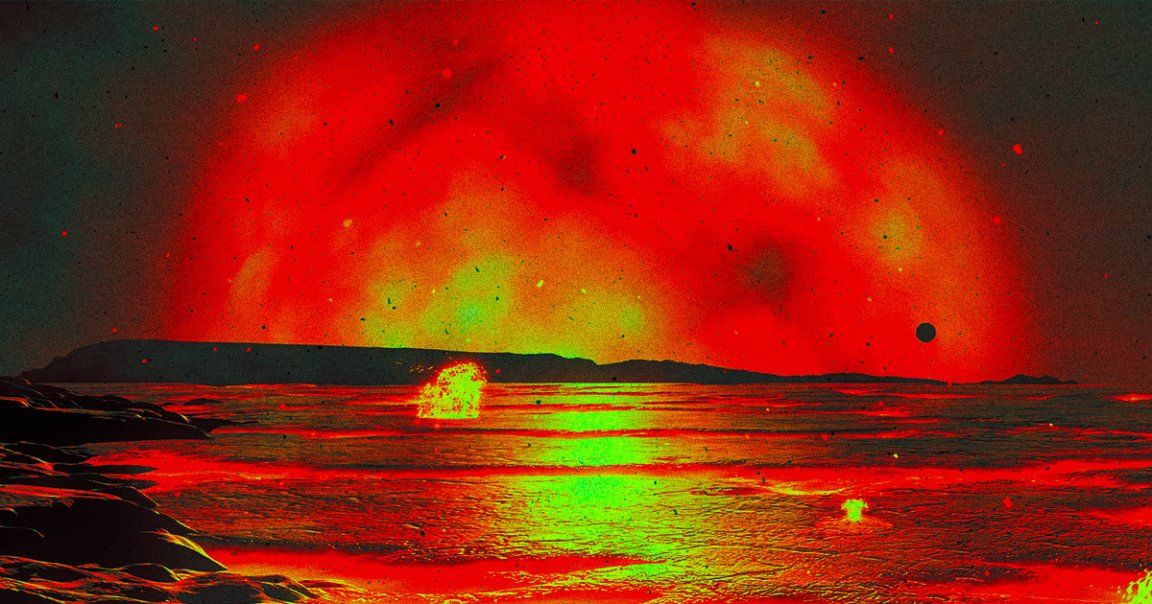
Tastes Like Chicken
Until recently, scientists had never spotted a star in the act of consuming a planet — and now that it’s been captured, we likely have a glimpse of Earth’s future.
Astronomers at Harvard, the Massachusetts Institute of Technology, the California Institute of Technology, and a spattering of other schools have been studying the process by which dying stars consume other planets, which has been a known phenomenon for some time but until now, hadn’t been observed in media res.
Published this week in the journal Nature, the consortium’s study about this unprecedented observation details how the star, which is located in our galaxy about 12,000 light-years away near the constellation Aquila, became brighter and brighter as it died — and how it left a strange signal in its wake.
As the MIT press release about the research notes, a dying star will “billow out to a million times its original size, engulfing any matter — and planets — in its wake.” This was what the scientists believe happened with the star they witnessed as it “became more than 100 times brighter over just 10 days, before quickly fading away.”
“Curiously, this white-hot flash was followed by a colder, longer-lasting signal,” the press release continued. “This combination, the scientists deduced, could only have been produced by one event: a star engulfing a nearby planet.”
Big Boy
The planet in question was, as the MIT statement notes, “likely a hot, Jupiter-sized world that spiraled close, then was pulled into the dying star’s atmosphere, and, finally, into its core.”
“We were seeing the end-stage of the swallowing,” said Kishalay De, an MIT astrophysics postdoc and the study’s lead author.
De added that this never-before-seen observation foretells our planet’s future, too.
“We are seeing the future of the Earth,” he said. “If some other civilization was observing us from 10,000 light-years away while the sun was engulfing the Earth, they would see the sun suddenly brighten as it ejects some material, then form dust around it, before settling back to what it was.”
While this isn’t exactly a rosy outlook, it’s good to know where we’re headed in a few billion years, right?
More on star stuff: Scientists Are Breathlessly Waiting For Betelgeuse to Explode